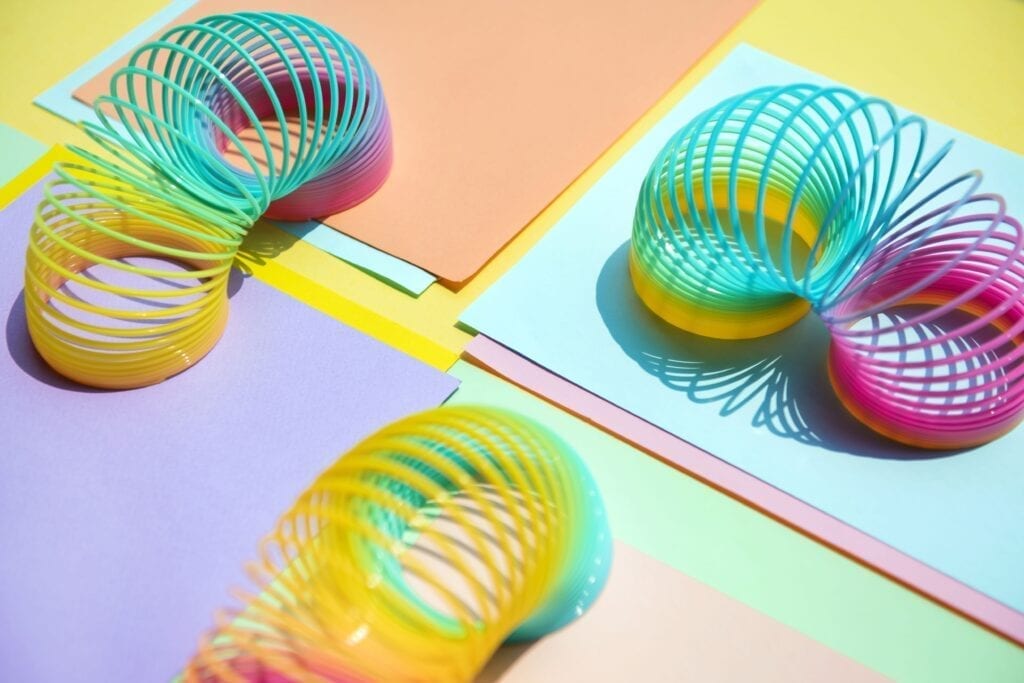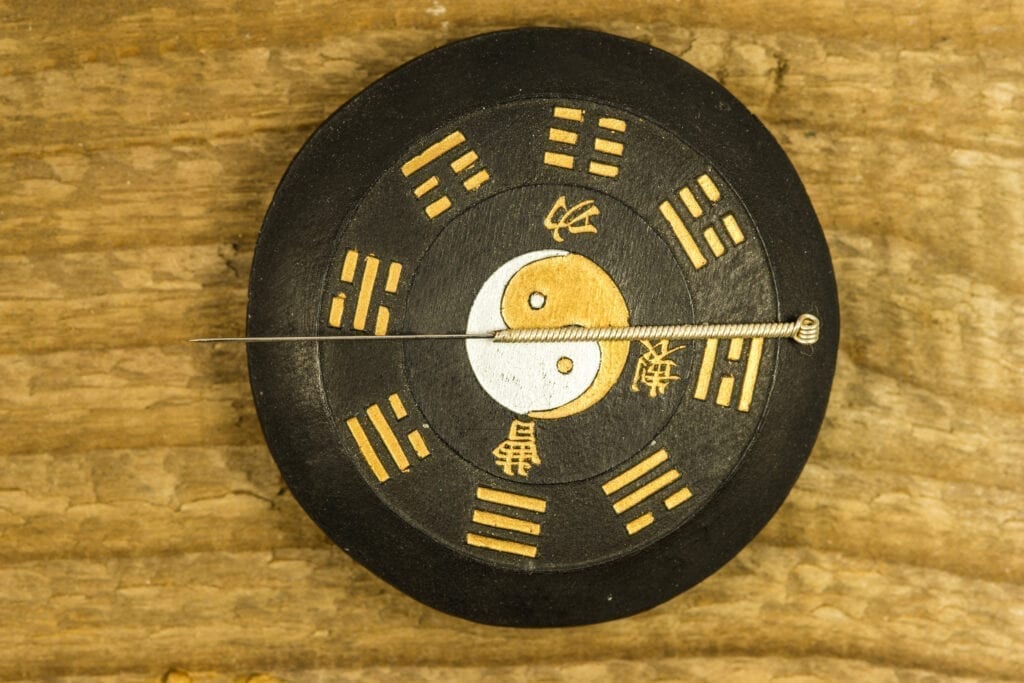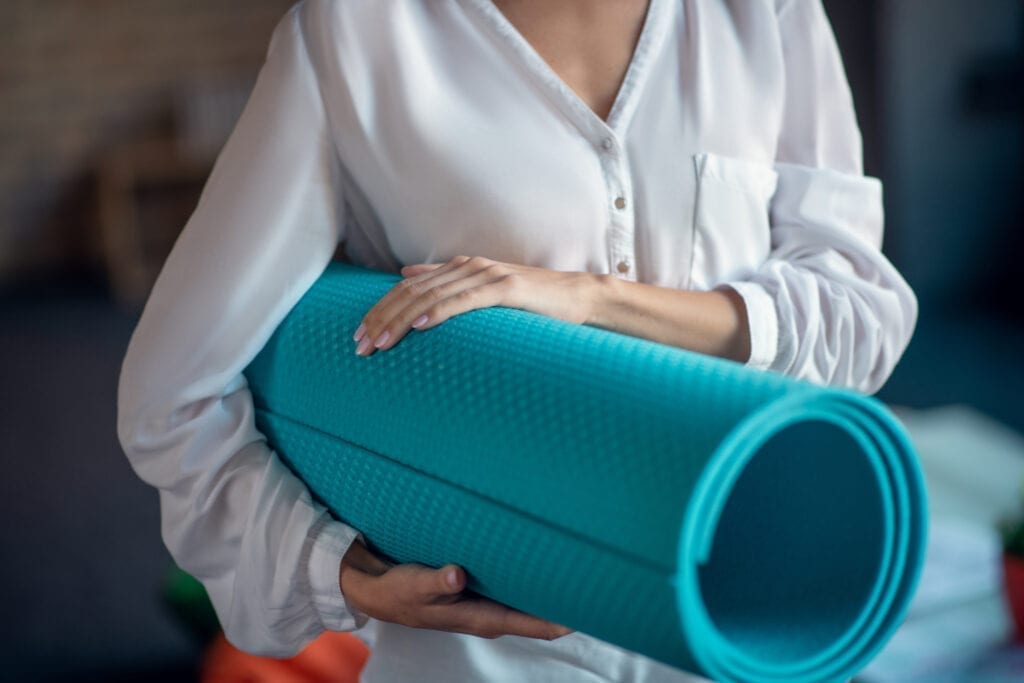
Alternative treatment for back pain: How can meditation, yoga, and co help?
This month, we’d like to take a closer look at #painkillers. We don’t mean those small colourful pills that promise you instant relief. We’d like to explore some sustainable methods to treat pain; methods that actually seek to find the cause and aim for holistic healing.
To do this, it’s important to understand pain in the first place. In our first article you will find an overview of the different types of pain and what’s actually happening in your brain when you feel pain.
Today, we want to look at the symptoms of muscle pain – primarily pain that affects your back and neck – and shed light on alternative treatment options, conduct research into the causes, and thus recognise the holistic nature of body, mind, and soul.
Modern science is also increasingly substantiating that it’s not only purely physical processes or bad posture that cause, for example, back pain, but that also factors such as stress, pressure, or other mental ailments are related to pain. More and more doctors are encouraged to look for psychosocial causes instead of just focusing on the physical body alone.

Muscle pain in your back and neck: Recognising symptoms and causes early on
Our neck area alone is made up of upteen nerve tracts, muscles, and vertebral bodies – this structure is far more complex than we can ever imagine.
The same applies to your back. This miracle doesn’t hold a few bad postures against us and can balance it out if we don’t sit up perfectly straight all the time or regularly build up our muscles.
However, if your neck or back starts to hurt, this is an indication that the muscles have been very tense and overstrained for a long time already. You can generally recognise this if you have the following physical symptoms:
- You can’t move as easily and flexibly as before
- Your muscles feel tight
- You struggle to move especially in the mornings
- Your legs and arms are sometimes numb, or you feel pins and needles
- You feel sharp pain in your muscles
- You have aching limbs and feel lethargic.
Back pain: Holistic therapy methods on the rise
Science is increasingly proving – for all types of pain – that there is a connection between body, mind, and soul. In this way, the complex miracle of the human body is seen holistically instead of shooting at individual symptoms like cannons at sparrows.
Traditional Chinese Medicine (TCM for short) is a possible approach from the repertoire of holistic treatment methods. It’s over 5,000 years old – thereby making it much older than our conventional western medicine.
This eastern approach assumes that pain is caused when our energy system – also called Qi – is not in equilibrium. These blockages in our energy system cause symptoms or pain to arise, which indicates where this imbalance lies.
Energy pathways help here – also called meridians. They run throughout the whole body and transport our vital energy to and from important organs and cells. You can think of it as a large network of arteries that get smaller and smaller and radiate into all the regions of our body.

When the Qi isn’t flowing anymore: acupuncture can help loosen blockages
There are points on these meridians, which are mainly located close to the body’ surface. You can think of these points as small fountains from which our vital energy gushes. If one of these points is blocked, then we develop symptoms, such as pain.
A doctor or therapist who is familiar with TCM will be able to find out which points are blocked based on your symptoms. The bizarre thing here is that the points related to back pain can be in your hand, for example. You can see by this just how complex and interconnected the human organism is. So, if you have back pain, the cause doesn’t necessarily have to be in that same region.
Now, you may be asking yourself what a therapist or doctor would do to help you in a case like this. Many TCM therapists and doctors work with acupuncture needles. By inserting these thin needles, blocked points are reawakened, thereby causing symptoms to disappear as if by magic and vital energy to flow freely again.
This approach is not only focused on the symptoms, but also tries to find out where the cause of the pain – and thus the blockage – comes from. The goal is to remedy these blockages, so that our vital energy can flow freely and unencumbered again.
This has nothing to do with hocus-pocus, but is a proven approach that is thousands of years old. For people who grew up in Asia, for example, this type of treatment will be much more familiar than swallowing pills or getting injections against symptoms.
One study proves just how effective TCM really is
The GERAC study (German Acupuncture Trial) is responsible for the fact that acupuncture for chronic back pain in the lumbar region is now even covered by social health insurance in Germany. The study divided 1,162 people, all of whom have suffered with back pain for an average of 8 years, into three groups:
- The first group was treated with acupuncture in accordance with the TCM standard.
- The second group received minimal acupuncture at non-traditional acupuncture points.
- The third group was treated with painkillers, physiotherapy, and exercises.
The results? After 6 months there was an improvement in symptoms of 47.6 percent in the first group, 44.2 percent in the second group, and 27.4 percent in the last group.
In summary, it can be said that chronic back pain can be effectively treated with acupuncture, according to the GERAC study even twice as effectively as with the standard treatment of painkillers and physiotherapy.

Treating chronic back pain with meditation, yoga, chi-gong, or tai-chi
In the last article we already addressed the correlation between mental health and physical well-being, which modern traditional medicine is also increasingly taking up.
If we take this seriously, then it’s only natural to us that a healthy and balanced mind will lead to a healthy body.
On the other hand, if we feel a lot of stress and pressure on our shoulders, our body will react sooner or later.
To figuratively throw stress and pain off our backs, we should make sure to allow our mind enough relaxation time.
A study in the Journal of the American Medical Association showed that both mindfulness-based stress reduction and behavioural therapy work better for non-specific lower back pain than the conventional cocktail of pain pills and physiotherapy.
For another report published in the journal for Holistic Nursing Practice, researchers at Florida Atlantic University’s College for Design and Social Inquiry examined the effects of yoga, tai chi (physical exercises and stretching based on mindfulness), and chi gong (traditionally Chinese meditative exercise therapy) on chronic lumbar spine pain (lower back pain).
The results show that
- measures incorporating the body and mind are effective for treating lower back pain;
- even psychological stress resulting from depression or anxiety can be reduced and the body can achieve better functional ability.
Other research shows how even the brains of patients suffering from chronic pain can change by simply erasing pain memory.

Sustainable well-being instead of a quick fix
Examinations and reports of this nature show us that being in pain always indicates important information from the psychological part of your being.
The body often suffers because it wants to draw our attention to the conflicts of our soul.
Unfortunately, these cries for help are rarely heard because we are mostly – especially in our modern society – interested in getting a “quick fix”. After all, our to-do list is quite long and items need to be ticked off. There is no time for introspection.
We just want everything to pass as quickly as possible and are prepared to ignore the cries for help for as long as we can. The problem here is that the cries won’t quieten down, they’ll keep trying to reach us – often in new ways, until we have no choice left but to address the issue.
Out of the wheelchair and walking again, all thanks to meditation?
Dr Joe Dispenza shows just how powerful our mind is in influencing our healing. He himself experienced an atrocious accident that left him bound to a wheelchair – and that without any positive forecasts.
However, Dr Dispenza wasn’t ready to accept his diagnosis. By means of in-depth meditative processes, he pretty much healed himself and reconstructed his spinal column. Sounds crazy, but can be explained in scientific terms.He recounts his experiences in the documentary “Heal“, which is available on Netflix.
Since his accident, the scientist has been working on finding out how we can use the latest insights from neuroscience and quantum physics to heal ourselves with the strength of our mind and thus lead a happier life.
Are you in the mood to rid yourself of some stress?
The methods and therapeutic approaches introduced in this article will help you to interpret the body’s cries for help with a holistic approach and to really listen to your body instead of just combating symptoms.
The goods news: You can start right away.
Lina is hosting a live training again on Wednesday, October 14th at 18:30. This time, you can enjoy 15 minutes of strength training, which will help you reduce back pain and also switch off your mind for a few moments. The time has come for your to just press the pause button and do something good for yourself. Your workload can wait. Promise.
We hope that you enjoyed reading our second article all about pain and that we were able to give you new ideas on how to understand yourself and your body more consciously and to see it as an alarm system.
In our next article we will share tangible tips with you to assist in reducing pain, getting a healthier back, and increasing your general well-being.
We look forward to it. You, too?
Your Humanoo team